*NURSING > DISCUSSION POST > NR 661 Week 6 OPIOD DISCUSSION; INDICATIONS AND STANDARDS FOR (COT), RISK OF OPIOD ADDICTION. (All)
NR 661 Week 6 OPIOD DISCUSSION; INDICATIONS AND STANDARDS FOR (COT), RISK OF OPIOD ADDICTION.
Document Content and Description Below
• Pain is a common complaint that is encountered in healthcare. The feeling of pain is subjective and unique to each individual, making it challenging for the healthcare provider to assess. With chr... onic pain being one of the most common healthcare complaints, recent years have found a rise in the number of opioid prescriptions that are written for patients, and in turn, an increase in the rate of opioid misuse and abuse. According to Blendon and Benson (2018), the rate of prescription opioid abuse has increased dramatically over the last 20 years. Cicero and Ellis (2017) state that the United States is the largest consumer of opioids and has seen a significant rise in the number of prescriptions for opioids from around 76 million in 1991 to an estimated 219 million in 2011. Blendon and Benson (2018) report that approximately 11 million Americans misuse their prescription for opioids. Recent years have also brought about a surge in opioid- related emergency room visits, hospital admissions, and deaths (Cicero & Ellis, 2017). These alarming statistics have drawn national attention and created a need for change. Describe the indications of chronic opioid therapy (COT) and standards for initiating as well as maintaining COT? • Chronic pain can have devastating physical, psychological, and social effects on the patient (Huber, Robinson, Noe, & Ness, 2016). It often leads to loss of productivity, depression, physical limitations, and diminished overall quality of life; therefore, proper and appropriate treatment of pain is essential to health and wellbeing (Huber et al., 2016; Lembke, Humphreys, & Newmark, 2016). • With the stigma and alarming statistics related to the overuse of opioid medications and opioid abuse, healthcare providers must understand the vital role that they play in reducing the rates of opioid-related morbidity and mortality. Part of the responsibility of healthcare providers in addressing the opioid crisis is being prudent prescribers. • Prior to initiating chronic opioid therapy, providers must carefully assess all aspects of the situation and conduct an in-depth discussion with the patient (Manchikanti et al., 2017). For pain to be considered chronic, the International Association for the Study of Pain states that the pain must persist beyond the typical length of time that it takes tissue to heal, which is approximately three months (Dowell, Haegerich, & Chou, 2016). The benefits of using opioids to treat pain must also outweigh the potential risk of harm, including serious side effects and high prevalence of abuse (Lembke et al., 2016). In addition, providers must complete all the necessary and appropriate diagnostic tests that are needed to thoroughly evaluate the cause of the pain, and must also consider other, non-opioid treatment options (Argoff & Viscusi, 2014; Manchikanti et al., 2017). Chronic opioid therapy should only be used when the potential benefits far outweigh the potential risks and also when no other treatment options have been effective in alleviating the pain. • Argoff and Viscusi (2014) states that once the decision has been made to prescribe opioids for the long-term management of chronic pain, clinicians should conduct an in-depth discussion with the patient regarding the potential for abuse and also establish treatment goals. Periodically • throughout treatment with opioids, the provider should hold discussions with the patient regarding the risks, benefits, and goals of therapy (Argoff & Viscusi, 2014; Dowell et al., 2016). Also, prior to initiating opioid therapy, a urine drug test should be collected to ensure that the patient is not currently taking or using any other drugs (Manchikanti et al., 2017). Urine drug tests should also be done periodically while the patient is receiving opioid therapy to assess compliance (Manchikanti et al., 2017). • Clinicians may also review the state prescription drug monitoring program. In the state of Kentucky, this is called KASPER. Programs like these allow providers to review the patient’s history of prescriptions for controlled substances; thus, allowing providers to ensure that the patient is not receiving narcotic pain medications from other sources that could potentially lead to an overdose or a harmful drug-drug interaction (Dowell et al., 2016). • Other considerations when a patient is receiving opioid therapy for chronic pain include prescribing the lowest effective dose, prescribing immediate-release rather than extended-release, close follow-up with patients with the recommended time between follow-up appointments being no longer than three months, and utilizing non-pharmacologic therapy along with opioid therapy to enhance treatment (Argoff & Viscusi, 2014; Dowell et al., 2016). What are ways to stratify or even minimize patient risk of opioid addiction? • When prescribing opioids to a patient, there are numerous steps that providers can take to minimize the risk of addiction. Extensive patient education regarding opioid medications and the risk for abuse is essential, as well as working with the patient to develop a realistic treatment plan, and also having the patient sign a physician-patient contract regarding treatment with opioids (Argoff & Viscusi, 2014; Dowell et al., 2016; Manchikanti et al., 2017). Providers should also carefully screen each patient before initiating opioid therapy to assess their risk for substance abuse and addiction (Akiva, Berkowitz, & Renner, 2015). Some patients are more prone to addiction than others, and if these patients require opioid treatment, they may need more extensive teaching, guidance, and follow-up or monitoring (Akiva et al., 2015; Huber et al., 2016). Screening tools, such as the Opioid Risk Tool, the Opioid Assessment for Patients with Pain, and the CAGE questionnaire may be used to assess patients both before initiating opioid therapy and throughout the course of treatment (Akiva et al., 2015; Huber et al., 2016). • As previously mentioned, opioid therapy should only be considered after all other options have been exhausted. When treatment with opioid medication is initiated, the lowest effective dose should be given. Many studies have also found that prescribing short-acting opioids lessens the chance of abuse and addiction (Argoff & Viscusi, 2014; Dowell et al., 2016). Patients should be carefully monitored while receiving opioid therapy and the goals and efficacy of treatment should be regularly discussed with the patient (Argoff & Viscusi, 2014; Dowell et al., 2016). • Effective pain management is critical to the health and well-being of patients suffering from chronic pain. However, due to the current epidemic of the misuse, abuse, and addiction surrounding the use of opioids, providers must carefully assess and evaluate each patient and situation to ensure that the benefits of opioid therapy outweigh the potential risks. The careful evaluation of patients must continue throughout the course of treatment. Patient education and open and ongoing communication, are also important when prescribing opioids to manage chronic pain. References Akiva, D., Berkowitz, O., & Renner, J. (2015, May). The evolution of chronic opioid therapy and recognizing addiction. Journal of the American Academy of Physician Assistants, 28(5), 23-27. doi: 10.1097/01.JAA.0000464268.60257.ad Argoff, C., & Viscusi, E. (2014, September). The use of opioid analgesics for chronic pain: Minimizing the risk for harm. The American Journal of Gastroenterology, 2(1), 3-8. doi: 10.1038/ajgsup.2014.3 Blendon, R., & Benson, M. (2018, February 1). The public and the opioid-abuse epidemic. The New England Journal of Medicine, 378, 407-411. doi: 10.1056/NEJMp1714529 Cicero, T., & Ellis, M. (2017, September). The prescription opioid epidemic: a review of qualitative studies on the progression from initial use to abuse. Dialogues in Clinical Neuroscience, 19(3), 259-269. Retrieved from https://www.ncbi.nlm.nih.gov/pmc/articles/PMC5741109/ Dowell, D., Haegerich, T., & Chou, R. (2016). CDC guideline for prescribing opioids for chronic pain – United States, 2016. Morbidity and Mortality Weekly Report, 65, 1-49. doi: http://dx.doi.org/10.15585/mmwr.rr6501e1. Huber, E., Robinson, R., Noe, C., & Ness, O. (2016, June). Who benefits from chronic opioid therapy? Rethinking the question of opioid misuse risk. Healthcare, 4(2). doi: 10.3390/healthcare4020029 Lembke, A., Humphreys, K., & Newmark, J. (2016, June 15). Weighing the risks and benefits of chronic opioid therapy. American Family Physician, 93(12), 982-990. Retrieved from https://www.aafp.org/afp/2016/0615/p982.html Manchikanti, L., Kaye, A., Knezevic, N., McAnally, H., Slavin, K., Trescot, A., … Hirsch, J. (2017, February). Responsible, safe, and effective prescription of opioids for chronic non-cancer pain: American Society of Interventional Pain Physicians (ASIPP) guidelines. Pain Physician, 20(2s), 3-92. Retrieved from https://www.ncbi.nlm.nih.gov/pubmed/28226332 [Show More]
Last updated: 1 year ago
Preview 1 out of 4 pages
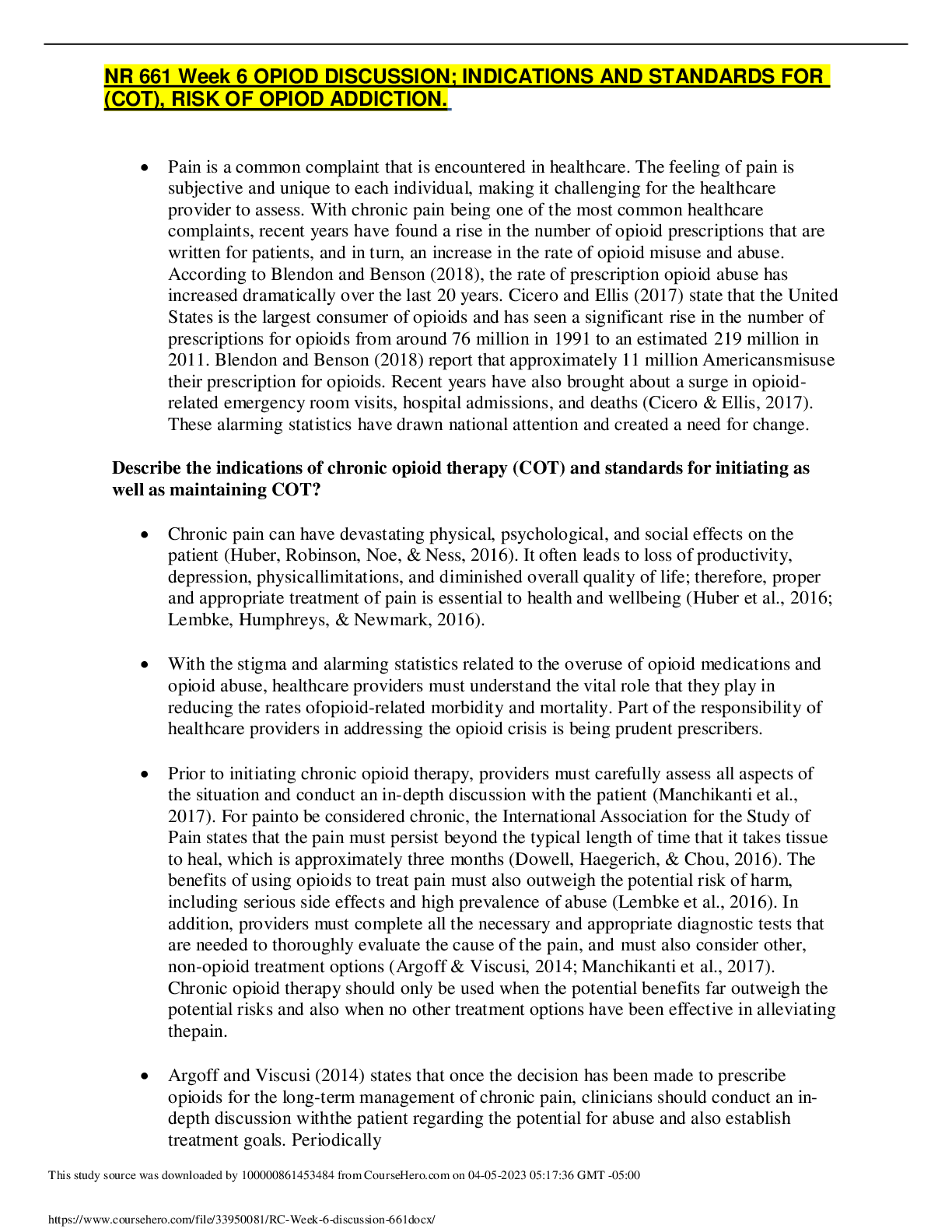
Reviews( 0 )
Document information
Connected school, study & course
About the document
Uploaded On
Apr 05, 2023
Number of pages
4
Written in
Additional information
This document has been written for:
Uploaded
Apr 05, 2023
Downloads
0
Views
68



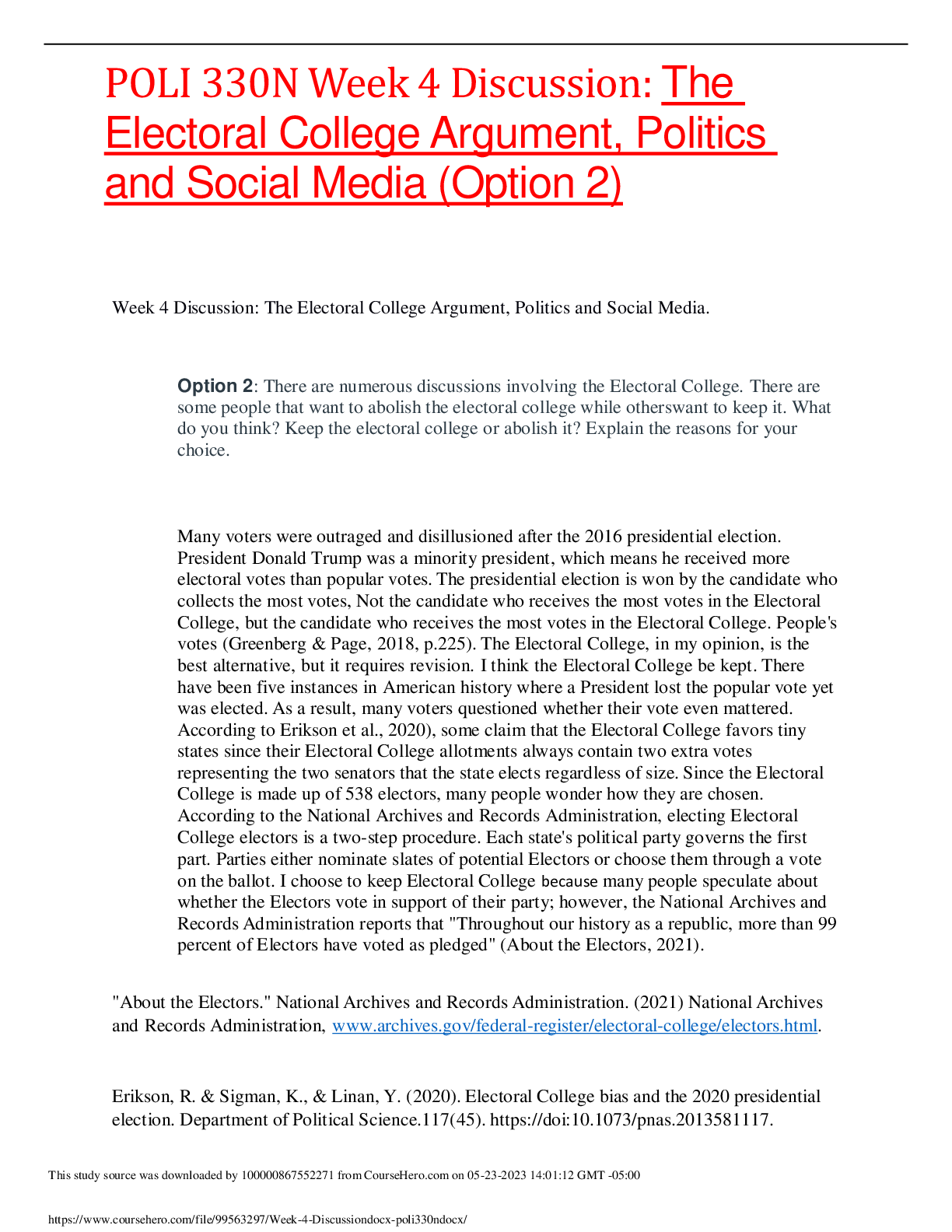

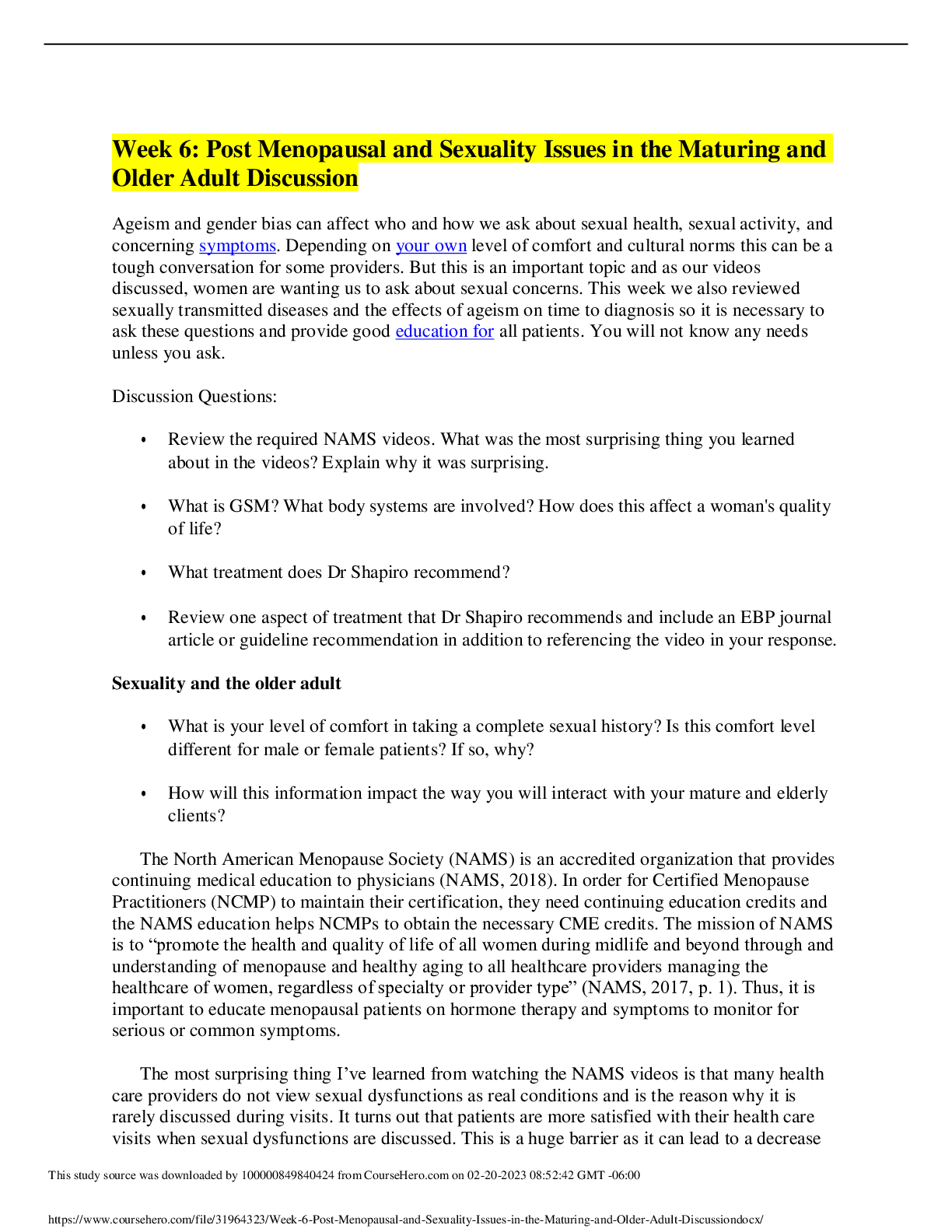

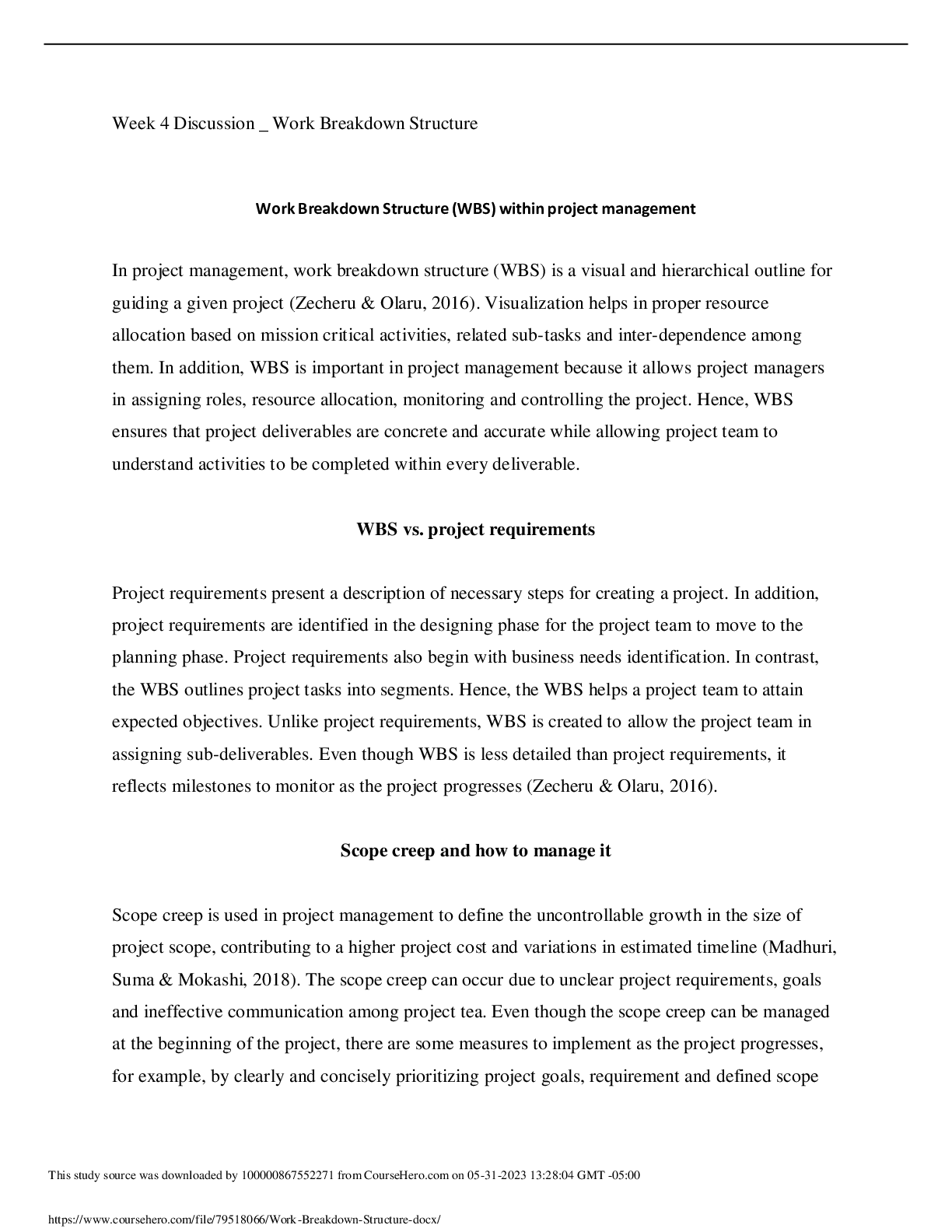










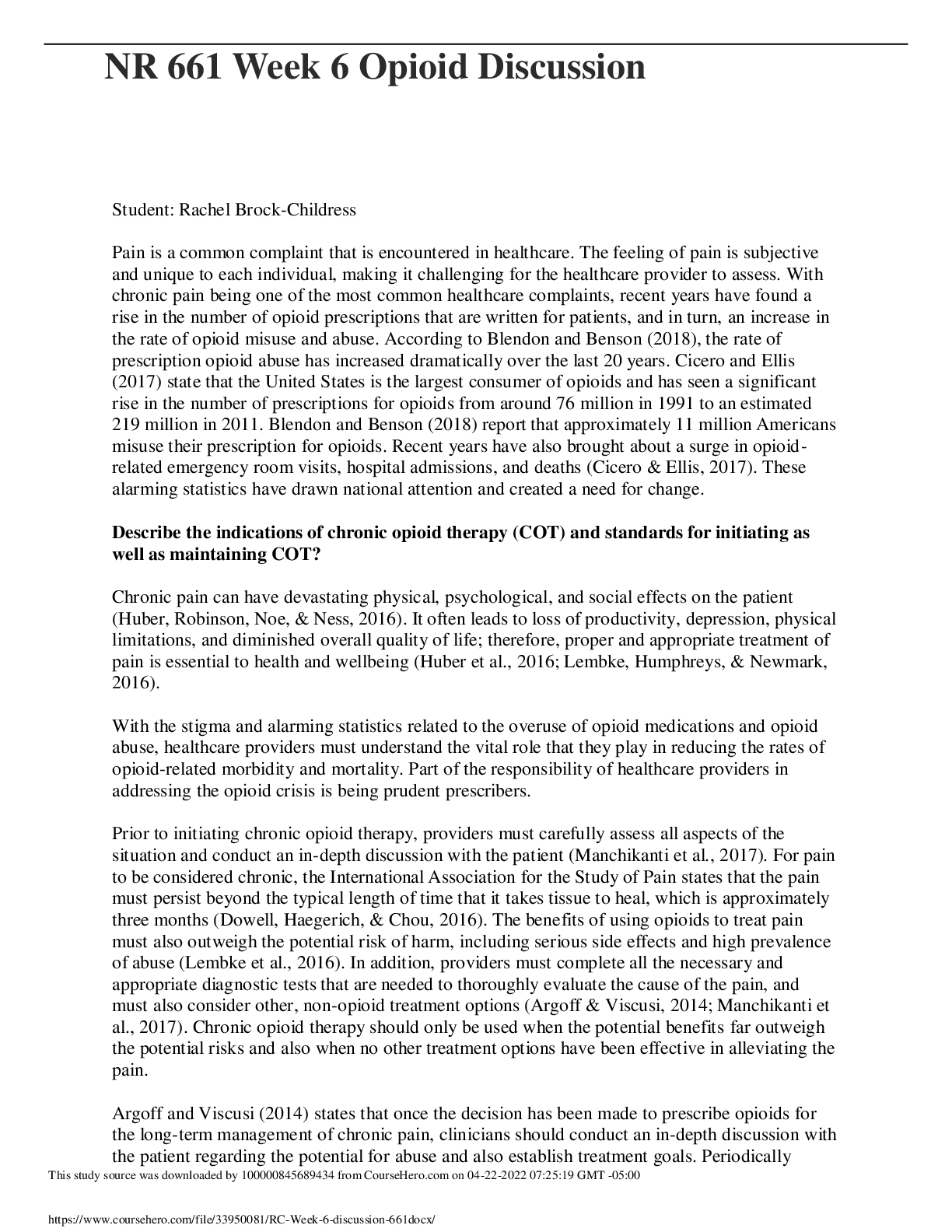






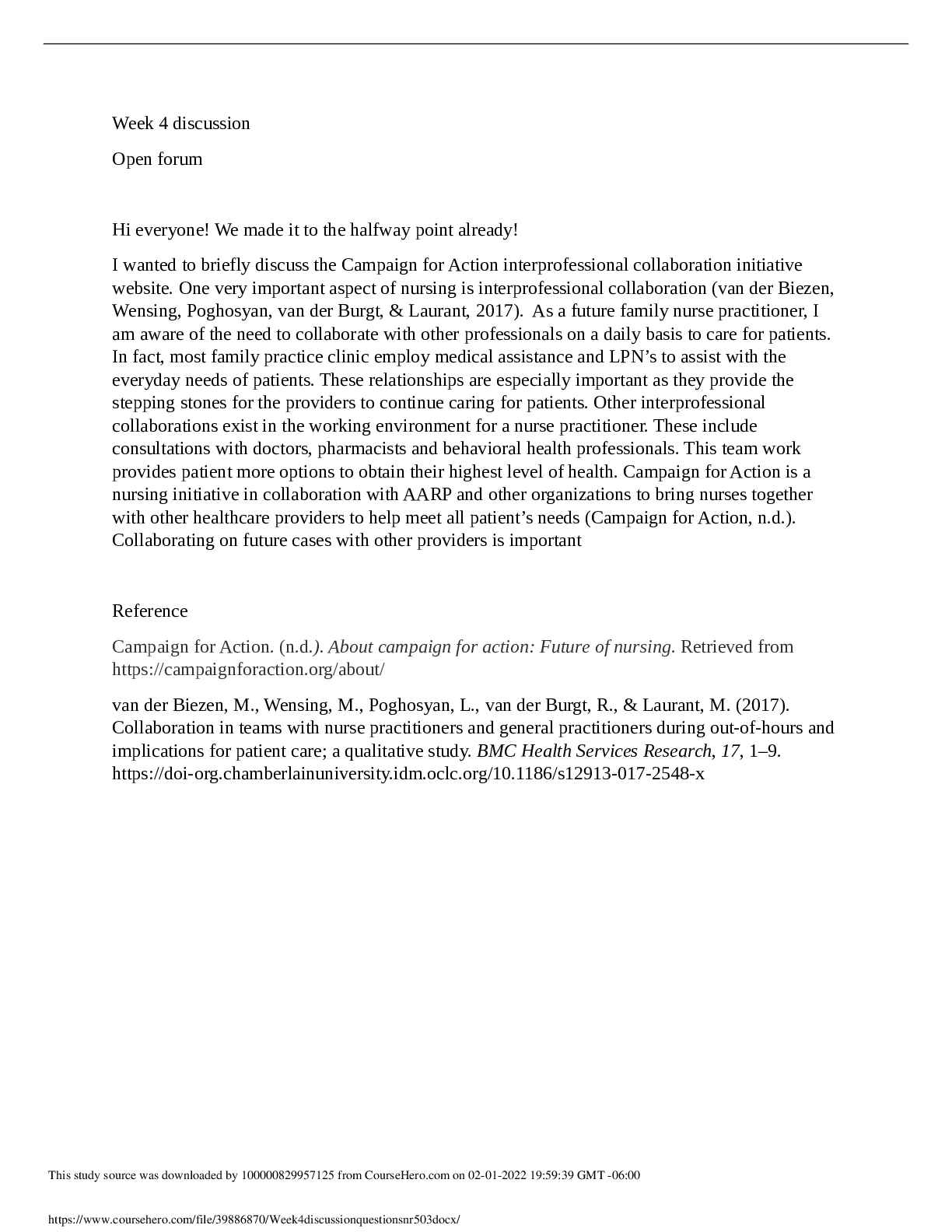


Growth and developmental patterns of toddlers.png)





